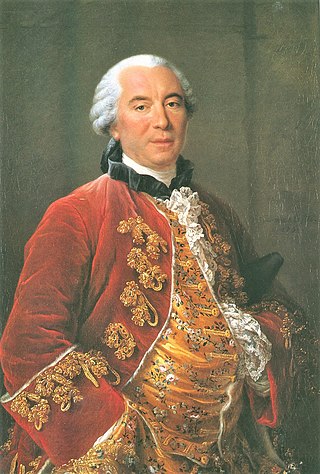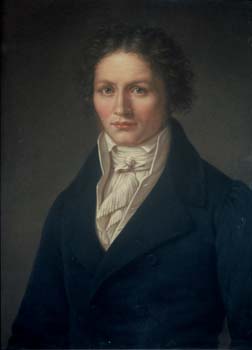Related Research Articles

Georges-Louis Leclerc, Comte de Buffon was a French naturalist, mathematician, and cosmologist. He held the position of intendant (director) at the Jardin du Roi, now called the Jardin des plantes.
The year 1826 in science and technology involved some significant events, listed below.

Pierre Belon (1517–1564) was a French traveller, naturalist, writer and diplomat. Like many others of the Renaissance period, he studied and wrote on a range of topics including ichthyology, ornithology, botany, comparative anatomy, architecture and Egyptology. He is sometimes known as Pierre Belon du Mans, or, in the Latin in which his works appeared, as Petrus Bellonius Cenomanus. The Russian physiologist Ivan Pavlov called him the "prophet of comparative anatomy".
The year 1811 in science and technology involved some significant events, listed below.
The year 1776 in science and technology involved some significant events.
The year 1794 in science and technology involved some significant events.
Significant events in 1805 in science and technology are listed.
The year 1846 in science and technology involved some significant events, listed below.

The year 1759 in science and technology involved several significant events.
The year 1657 in science and technology involved some significant events.

Johann Baptist Ritter von Spix was a German biologist. From his expedition to Brazil, he brought to Germany a large variety of specimens of plants, insects, mammals, birds, amphibians and fish. They constitute an important basis for today's National Zoological Collection in Munich. Numerous examples of his ethnographic collections, such as dance masks and the like, are now part of the collection of the Museum of Ethnography in Munich.

André Thevet was a French Franciscan priest, explorer, cosmographer and writer who travelled to the Near East and to South America in the 16th century. His most significant book was The New Found World, or Antarctike, which compiled a number of different sources and his own experience into what purported to be a firsthand account of his experiences in France Antarctique, a French settlement near modern Rio de Janeiro.
The year 1541 in science and technology included a number of events, some of which are listed here.
The year 1584 in science and technology included many events, some of which are listed here.
The year 1578 in science and technology included a number of events, some of which are listed here.
The year 1586 in science and technology included a number of events, some of which are listed here.
The year 1553 CE in science and technology included a number of events, some of which are listed here.
The year 1555 CE in science and technology included a number of events, some of which are listed here.
The year 1558 in science and technology included a number of events, some of which are listed here.

In 1557, a pandemic strain of influenza emerged in Asia, then spread to Africa, Europe, and eventually the Americas. This flu was highly infectious and presented with intense, occasionally lethal symptoms. Medical historians like Thomas Short, Lazare Rivière and Charles Creighton gathered descriptions of catarrhal fevers recognized as influenza by modern physicians attacking populations with the greatest intensity between 1557 and 1559. The 1557 flu saw governments, for possibly the first time, inviting physicians to instill bureaucratic organization into epidemic responses. It is also the first pandemic where influenza is pathologically linked to miscarriages, given its first English names, and is reliably recorded as having spread globally. Influenza caused higher burial rates, near-universal infection, and economic turmoil as it returned in repeated waves.
References
- 1 2 3 Grun, Bernard (1991). The Timetables of History (3rd ed.). New York: Simon & Schuster. pp. 246–7. ISBN 0-671-74919-6.
- ↑ Acheson, David (2002). 1089 And All That. Oxford University Press. p. 33. ISBN 0-19-851623-1.
- ↑ French, Roger Kenneth (Winter 2001). "Ancients and Moderns in the Medical Sciences: from Hippocrates to Harvey". Bulletin of the History of Medicine. 75 (4): 450. doi:10.1353/bhm.2001.0168. S2CID 72630641.
note 15
- ↑ Weeks, M. E. (1968). Discovery of the Elements (7th ed.). Journal of Chemical Education. pp. 385–407. ISBN 0-8486-8579-2. OCLC 23991202.
- ↑ León, Fernando González de (2009). The Road to Rocroi: Class, Culture and Command in the Spanish Army of Flanders, 1567-1659. Leiden: BRILL. p. 135. ISBN 978-9004170827.